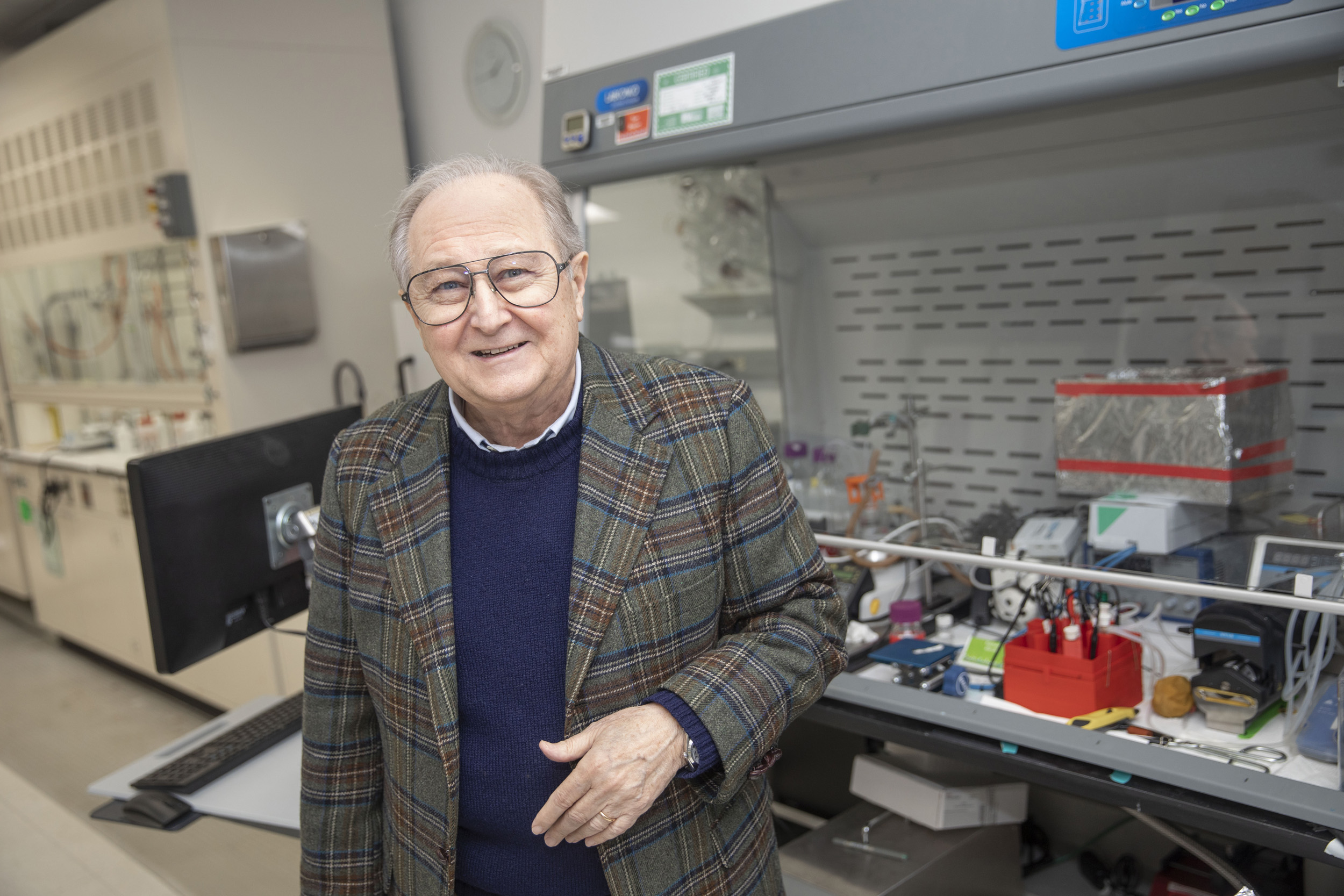
“I believe we should be very open about other forms of life elsewhere in the universe, and that they may not resemble life as we recognize it now,” says physicist Juan Pérez-Mercader.
Kris Snibbe/Harvard Staff Photographer
Why there might be life out there unlike any on Earth
Researchers create synthetic species without biochemistry, find they operate according to Darwinian evolutionary principles
Imagine the possibility of life forms on other planets that don’t resemble any on Earth. What might they look like, and why would they be so different?
Juan Pérez-Mercader says it may be possible and the answer may be that they developed from a different type of chemistry. For more than 10 years, the senior research fellow in the Department of Earth & Planetary Sciences and the Origins of Life Initiative at Harvard has studied how to produce synthetic living systems — without relying on biochemistry, or the chemistry that has enabled life on Earth.
“We have been trying to build a non-biochemical system, which unaided is capable of executing the essential properties common to all natural living systems,” Pérez-Mercader explained.
The Pérez-Mercader lab’s latest study, published last month in Cell Reports Physical Science, even finds such a system engaged in what Charles Darwin called “the struggle for life.” The paper features Pérez-Mercader with co-authors Sai Krishna Katla and Chenyu Lin describing how they created two synthetic models (or “species”) and observed the ensuing competition between them.
Long before this study, the lab figured out how to create non-biochemical but carbon-chemistry-based systems called protocells. These are made up of self-assembling polymer vesicles that emerge from a homogenous blend of smaller synthetic chemicals with no relation to living organisms. “These systems act like biochemical cells,” Pérez-Mercader noted. “They are born, metabolize what they need, grow, move, reproduce, and perhaps even evolve.”
Now the researchers wanted to see whether these systems would operate according to the evolutionary principle of competitive exclusion. As we know from Darwin’s work, this involves the struggle for survival — with the species with the greatest competitive advantage edging out the other when vying for resources.
That’s why Pérez-Mercader and his team created two new species of protocells for this particular study — one with the advantage of light sensitivity, the other without. When the researchers watched how these systems behaved as they shared food in an illuminated environment, they saw that the light-sensitive “species” endured while the other did not. “It’s the struggle for existence where the best-suited structure survived in its environment,” Pérez-Mercader said.
With these results, Pérez-Mercader is willing to go as far as to suggest that biochemicals are not essential to the struggle for life. “This shows that non-biochemical carbon chemistry can lead to the extinction of the less ‘fit’ protocell species,” he said.
His team’s findings beg the question: Could there be chemistries beyond Earth capable of implementing the fundamental properties of life?
“It’s possible there are materials, which once on a planetary surface somewhere with appropriate conditions, could react chemically, self-organize, and perhaps do the things that this experiment shows,” Pérez-Mercader said.
Under the right circumstances, these materials may evolve from very simple chemistry into more complicated structures, he said. “I believe we should be very open about other forms of life elsewhere in the universe, and that they may not resemble life as we recognize it now.”





